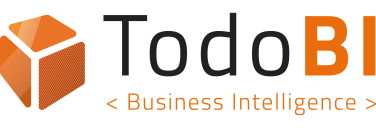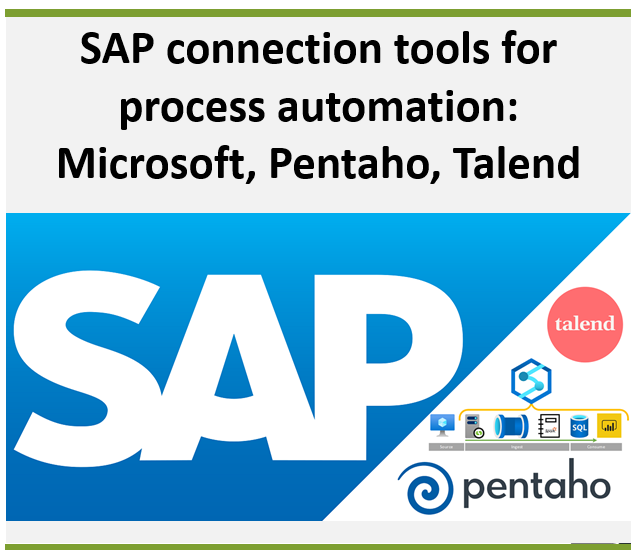This document gathers a series of tools used for process automation. A brief introduction of each tool will be made, as well as the most common advantages and disadvantages when working with this tool will be explained and finally for each tool it will be explained how it can be connected to SAP Hana to automate a process.
CONTENT:
- INTRODUCTION 1
- PENTAHO 3
- TALEND 8
- POWER AUTOMATE 20
- AZURE DATA FACTORY / SYNAPSE ANALYTICS 26
- CONCLUSIONS 64
DOWNLOAD:
Once we have seen the automation tools, we can see how there are big differences when choosing one tool or another to automate our process. In general terms, the choice of one tool or another will be dictated by the type of process we want to develop, as well as the type of licenses we have in our organization.

In general terms we can see how Azure Data Factory and Power Automate could be the most appropriate when automating processes. Since both tools have enough documentation to investigate and consult in case of any problem. However, Azure Data Factory would be more desirable in case the process to be automated had some complexity or followed a type of workflow that could not be created with Power Automate, since this tool allows to create much simpler flows.

On the other hand, Pentaho, although it is not a bad option, it is worth mentioning that it does not have extensive documentation and that it does not have a specific connector to connect to SAP HANA so it would be necessary to install the IT NOVUM plug-in, which is a tedious and complex process. In resume, it would be more advisable and, considered that Pentaho is not being used from the beginning, to use another tool, but it´s the best option if you wish a fully open source tool

Talend could be another option, and even if the specifications of the company require it when creating the process, it would not be necessary to buy the paid version of the tool. On the other hand, if the process to be automated is a simple process, it is not worth it because the installation of the tool is somewhat complicated and although there is a lot of documentation about it Talend is a complicated tool to use if you are new to it.


As for Power Automate, it should be noted that this tool is very intuitive and easy to use, but with it you cannot perform flows as complex as those you can perform for example in Talend. In this case to connect to SAP and extract information from the tables it would require a license because the connector is premium.

Finally, regarding Azure Data Factory, as we have seen there are several types of connectors with which we can connect to SAP, in this case we have explained the SAP HANA connector and the ODP connector for SAP. Using one or another connector would depend in part on the amount of data that would be handled in the tables that are in SAP, as well as the type of process that you want to carry out. Choosing this tool to automate processes or another tool will depend not only on the amount of data to be handled in the SAP tables, as ADF is capable of loading terabytes of data very fast but also in the frequency with which the process will be used because we must consider that with Azure Data Factory we pay for what we use.





